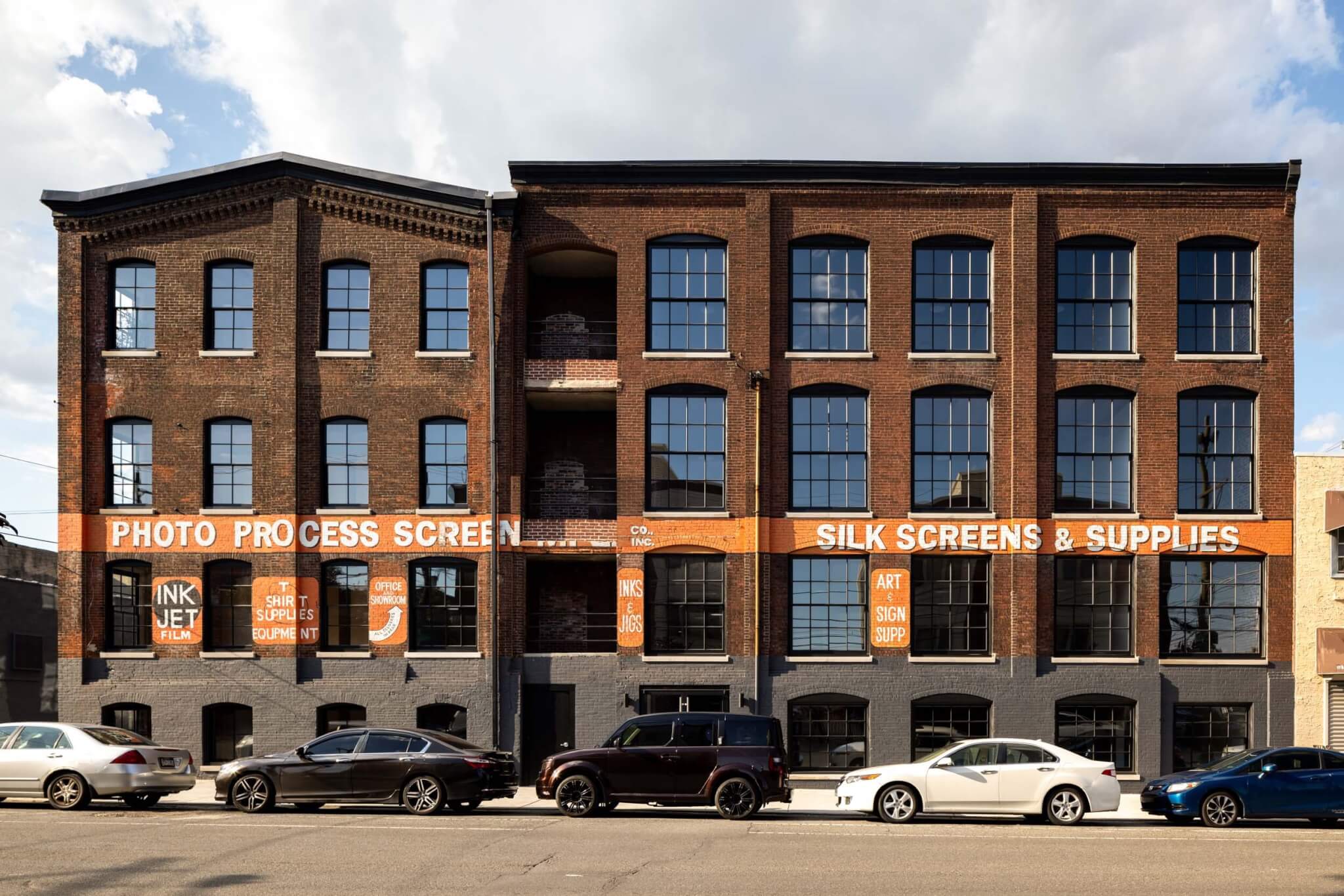As Kevin Kaminski, cofounder of Kaminski+Pew, set out to convert an old shoe factory in Philadelphia into a makerspace for artists he couldn’t help but be reminded of something Robert Venturi had said to him years ago: “Think about buildings as a mitten rather than a glove, so that you know you’re not building something so specific that it can’t have a future life.” The adage rings through in Silk Screen Studios where an open floorplan of artist studios can continuously adapt to the needs of the community.
In Norris Square, an up-and-coming neighborhood in Philadelphia, local firm Kaminski+Pew has breathed new life into a dilapidated warehouse. Originally a shoe factory dating from the 1880s, the brick building is now home to Silk Screen Studios, a makerspace of art studios.

While Kaminski+Pew may have rewritten the narrative of the humble 4-story warehouse, the designers’ sensitive approach maintained a sincere material palette and kept the building’s historical context afloat, recalling Venturi’s legacy that architecture can blend past with present.
“We tried to let the materials be,” Kaminski told AN. “We believe in the honesty of materials to the greatest extent possible. So let the brick be brick. Let the wood be wood. Let those natural materials and textures come through and really just kind of be the center of the design.”

Plans for the redesign of Silk Screen Studios began in 2019. First the space was slated for conversion into apartment buildings, but this project fell through on several occasions due to financial constraints. The owner then pivoted, recentering the future of the building on historical context. The third and final project proposal set out to create workspaces for creative individuals instead of residences. This program seemed a better fit for the raw industrial space, and required less intensive transformation. The program let the building’s materials and past guide the work.
Early on in the design phase, Kaminski+Pew recognized the bold orange signage, that wraps around the front of the building, as “a fixture in the community.” The designers used this strong visual identity as a starting point for the creative studios: it offered a nod into the past, with contemporary appeal.

Silk Screen Studios can accommodate up to 56 artisan spaces with its flexible partitions. Each floor includes private creative offices, along with a public kitchen and gathering area where artists can convene in their creative pursuits, to learn and engage with one another to create an innovative, imaginative environment.

The orange signage acts as a symbol of the building’s timelessness. Other elements of the building, however, were not salvageable and were replaced. The floors were redone to mimic the original. The windows were custom-fabricated to improve thermal performance—all without compromising historical integrity. The existing fenestration was replicated and the profiles of the windows matched as best as possible.
Kaminski+Pew have thoughtfully retained Venturi’s defiance of the rigidity of modernism in its re-design of Silk Screen Studios, embracing a playful design where past and present harmoniously converge.

